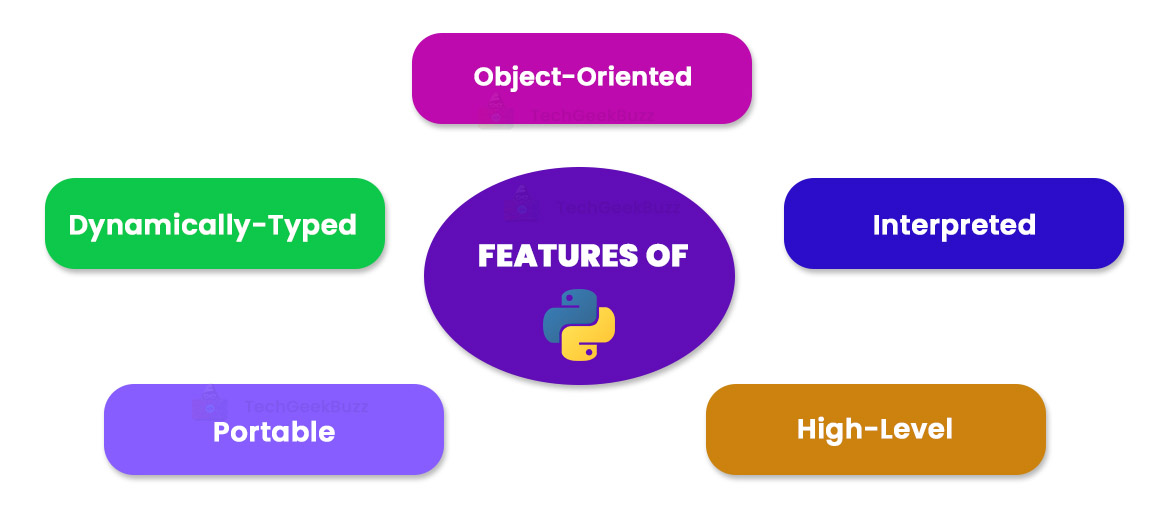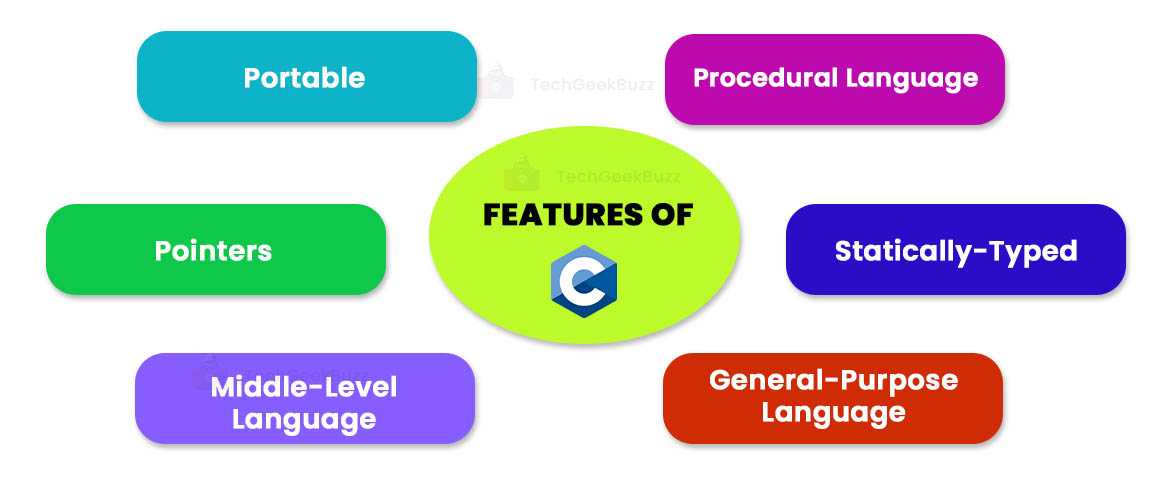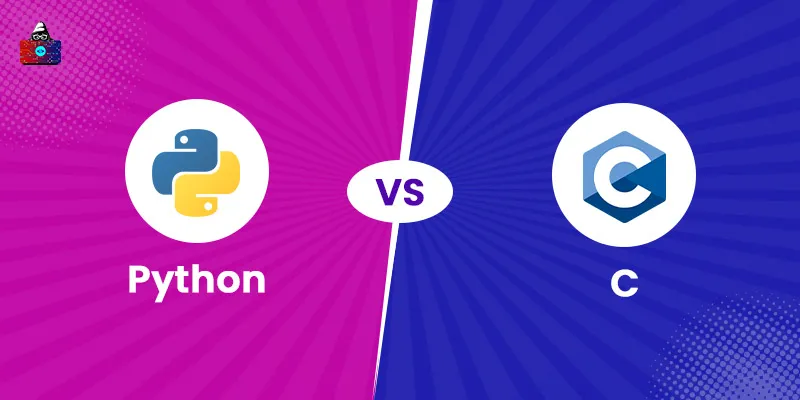A plethora of programming languages is available out there. Therefore, one of the most common questions that arise in the minds of beginners in the field of computer programming is - which language to choose?
Since beginners always want to learn easy and simple programming languages at the onset of their careers, C and Python are the most preferred languages for them. C is an older language than Python. However, Python is more popular than C these days due to its features. Therefore, before choosing between Python and C, it is essential for novices to understand the differences between the two programming languages.
Well, this article will help you to understand all the key differences between Python and C. It will also make you familiar with Python and C individually, along with their features, upsides, and downsides. So, let us get started!
What is Python?
Python is an interpreted, general-purpose, and high-level programming language. It follows multiple programming paradigms, such as object-oriented, functional, structured, and procedural. This language primarily emphasizes code readability with its indentation. It does not use semicolons after the end of a statement or braces to delimit blocks.
The syntax of Python is pretty simple and easy to understand since it involves simple English keywords. The document, The Zen of Python, includes Python’s core philosophy, as listed below:
- Beautiful is better than ugly
- Readability counts
- Simple is better than complex
- Explicit is better than implicit
- The complex is better than complicated
Python is a garbage-collected and dynamically typed programming language. Due to Python’s comprehensive standard library, it is often called the ‘batteries included’ language. This standard library of Python has two modules, namely itertools and functools that can implement functional tools from Haskell and Standard ML.
History
Python is the successor of the ABC programming language. Guido Van Rossum started developing Python in the late 1980s at Centrum Wiskunde & Informatica (CWI) in the Netherlands and released it in 1991 as Python 0.9.0. In October 2000, he released Python 2.0 with many new features, including support for Unicode, memory management, and cycle-detecting garbage collector.
In December 2008, Rossum released Python 3.0, which turned out to be a significant revision to the Python language that was not completely backward-compatible. It includes a 2to3 utility that automates the translation of Python 2 code to Python 3.
Furthermore, in 2020, Python 2.7 was discontinued, and only Python 3.6.x and later versions are supported now. The latest version of Python is 3.10, released in January 2022.
Features

Here are the salient features of Python :
- Object-Oriented: Python is an object-oriented language, i.e., everything in Python is an object. It supports inheritance and polymorphism.
- Interpreted: Python is an interpreted language and comes with an Interactive Development Environment (IDLE). IDLE is an interpreter that follows the REPL structure (Read-Evaluate-Print-Loop). It executes one line and immediately displays its output.
- High-Level: Since Python is a high-level language, you need to focus on neither the system architecture nor you need to manage the memory.
- Portable: Python is a platform-independent and portable language. Any Python code developed for a Windows system can run on macOS and Linux systems.
- Dynamically-Typed: Like Java, Python is not statically-typed. There is no need to declare the data type of variables while declaring them. The interpreter automatically determines the data type of a variable at runtime.
Advantages of Python
Let us now have a look at some significant benefits of Python.
- Python’s English-like syntax makes it easy to read and understand, even for beginners. Therefore, it has a low learning curve.
- The lines of code you write in Python to accomplish a specific task are relatively fewer than lines of code you write in C, C++, or Java languages.
- Python enables developers to write less code and get more things done. Its simplicity allows developers to focus on the actual problem and not on understanding the syntax or behavior of the language.
- Python is a free and open-source language, meaning that anyone can use it freely.
- It comes with extensive support for libraries, eliminating the need to rely on external libraries.
Disadvantages of Python
The following are the drawbacks of Python:
- As mentioned above, Python is an interpreted and dynamically typed language. Therefore, the execution of code line by line takes a lot of time, which makes Python a slow language.
- Python consumes a huge amount of memory, and hence, it is not ideal for developing memory-intensive applications.
- Since Python is slow and memory inefficient, it is not ideal for mobile computing.
- Python’s database access layer is underdeveloped and primitive compared to JDBC and ODBC.
- The data type of variable in Python can change anytime since it is a dynamically typed language. A variable containing an integer can hold a string in the future.
When to Choose Python?
When you need to develop robust web applications, mobile applications, video games, artificial intelligence models, and machine learning-enabled systems, choosing Python is an excellent move. In addition, Python is also a popular language among data scientists when it comes to data analysis and data visualization.
What is C?
C is a general-purpose and procedural programming language that follows the structured programming paradigm . It is one of the oldest programming languages, and it is specially designed as a system programming language to write operating systems. It is called a middle-level language since it includes the features of the low-level language, i.e., specific to one machine, and the high-level language, i.e., not specific to one machine.
Moreover, C is called a mother language because most of the modern programming languages, like C++, Java, C#, etc., follow the C syntax. Also, most of the compilers, Java Virtual Machines (JVMs), and Kernels are developed in C. In short, we can define the C language as:
- Mother language
- System programming language
- Procedure-oriented programming language
- Structured programming language
- Mid-level programming language
To learn and master the C language, you can buy the course here.
History
The development of C is closely related to the development of Unix. Dennis Ritchie and Ken Thompson started developing the UNIX operating system and wanted to create utilities for it. Ken Thompson first tried to create utilities for Unix by making a Fortran compiler, but he gave up his idea.
Later, he created a cut-down version of the BPCL system programming language. He changed the syntax to make it less wordy and produced something more simple, B. However, he wrote some utilities in B which were too slow.
Dennis Ritchie designed the C language as a successor to the B language between 1972 and 1973 at Bell Labs. In 1972, he started improving the B language by adding data typing for variables, which resulted in the creation of the C programming language. The primary motive for developing C was to construct utilities running on UNIX.
Over time, C gained massive popularity and became one of the most widely used programming languages. In 1978, Brian Kernighan and Dennis Ritchie published the first edition of the book, The C Programming Language. This was well-known to C programmers as K&R. It is also called C78, as it got published in 1978. In 1989, ANSI and the International Organization for Standardization (ISO) standardized the C language.
Features

Following are the remarkable features of C:
- Procedural Language: C is a procedural language. Meaning that the program code is a series of instructions to be carried out to accomplish a specific task or solve a particular problem. In other words, programmers have to specify a step-by-step procedure, i.e., what to do and how to do.
- Statically-Typed: Unlike Python, C is a statically-typed language. You have to define data types of variables while declaring them. Also, the C compiler checks the data type of variables at the compile time and not at the run time.
- General-Purpose Language: C is a general-purpose language used to develop various applications, ranging from system programming to photo editing software. It is used for developing operating systems, such as Windows, Linux, iOS, and Android, and databases, such as Oracle, MySQL, PostgreSQL, and SQL Server.
- Middle-Level Language: C combines the features of high-level and low-level languages, and hence, it is called a middle-level language.
- Pointers: C supports pointers. Pointers store the address of a variable or a memory location.
- Portable: Code written in C can run on any machine supported by C without any modifications.
- C comes with a rich set of built-in operators and libraries.
Advantages of C
The following are the key benefits of C:
- C is one of the most simple languages to understand and learn since it has an easy syntax.
- It is a building block or fundamental language for many other high-level languages, including C++, Java, and Python.
- The C language can extend itself because the C library has an array of functions. We can easily use these functions in our code or create our own functions and add them to the C library.
- Programs developed in C can run faster than the ones developed in other languages.
- It also supports dynamic memory allocation.
Disadvantages of C
Here are some downsides of C:
- C does not support the object-oriented programming paradigm.
- It does not support runtime polymorphism.
- There is no automatic garbage collection in C. Developers have to do it manually.
- There is no runtime checking in C.
- It does not support the concept of the namespace. Therefore, we cannot declare two variables at the same time, as we can do in C++.
When to Choose C?
When you need to develop system applications, desktop applications, hardware applications, operating systems, embedded systems, new programming platforms, databases, and compilers, C is one of the most preferred choices. Therefore, we can say that C is used in both hardware and software development.
Python vs C: A Head to Head Comparison
Here is a comprehensive comparison of Python and C languages to help you select the best one for your project:
| Parameters | Python | C |
| Definition | Python is a general-purpose, object-oriented programming language developed by Guido Van Rossum. | C is a general-purpose, procedure-oriented programming language developed by Dennis Ritchie. |
| Type of language | It is a high-level language since the translation of Python code takes place in machine code through an interpreter. | It is a mid-level language since it bridges the gap between machine-level or low-level and high-level languages. |
| Compilation and Interpretation | Python is an interpreted language. | C is a compiled language. |
| Speed | Python programs are usually slower than C programs. | Programs developed in C are faster than the ones developed in other programming languages. |
| Pointers | There is no support for pointers in Python. | C supports the concept of pointers. |
| Statically or Dynamically-typed | It is a dynamically-typed language, i.e., you do not have to define the data type of variables while declaring them. | It is a statically-typed language, i.e., you need to define the data type of variables while declaring them. |
| Memory Management | Python comes with a garbage collector that automatically manages memory. | There is no automatic memory management in C. You have to do it manually. |
| Inline Assignment | Python does not support an inline assignment. When you run a=5 in Python, it throws an error. | C supports an inline assignment. When you run a=5; in C, it works well. |
| Files | A file containing Python code has the .py extension. | A file containing C code has the .c extension. |
| Error Debugging | Error debugging in Python is very simple. Since it is an interpreted language, it takes a single line of code and compiles and runs it simultaneously. Therefore, you get errors instantly as soon as you execute a line of code. | Since C is a compiled language, error debugging is pretty difficult. The C compiler first compiles the entire code and then lists out all errors. |
Python vs C: Which is Better?
Both C and Python are general-purpose programming languages and are used for developing various applications. The primary difference between Python and C is that Python is an object-oriented and multi-paradigm programming language, whereas C is a procedural and structural language.
Since Python is a general-purpose programming language, you can use it for machine learning, web development, artificial intelligence, mobile application development, operating systems, and video game development.
On the flip side, C is primarily preferred to develop hardware applications, such as operating systems, network drivers, etc. In terms of performance, Python is slow as compared to C since it is an interpreted language and takes time to read and execute code line by line. But It has a simpler and more easy-to-understand syntax than C, as it uses simple English keywords.
Therefore, Python is an ideal language to choose when the requirement is for faster development and a beginner-friendly language. However, there is no beating C if your requirements include building OS architecture, performing any processor-intensive task, and designing hardware applications.
Conclusion
Python and C are popular programming languages and each one of them has its own features, pros and cons, and use cases. Choosing C would be a great choice if you want to build hardware applications.
On the contrary, Python is a general-purpose programming language used for the development of mobile applications, web projects, video games, artificial intelligence models, and machine learning models. Therefore, we recommend you pick one between Python and C depending on your project requirements.
We hope the above comparison of C and Python has helped you develop a clear idea of when to choose Python and when to use C. You can post your queries or suggestions in the comments section below.
People are also reading:





Leave a Comment on this Post